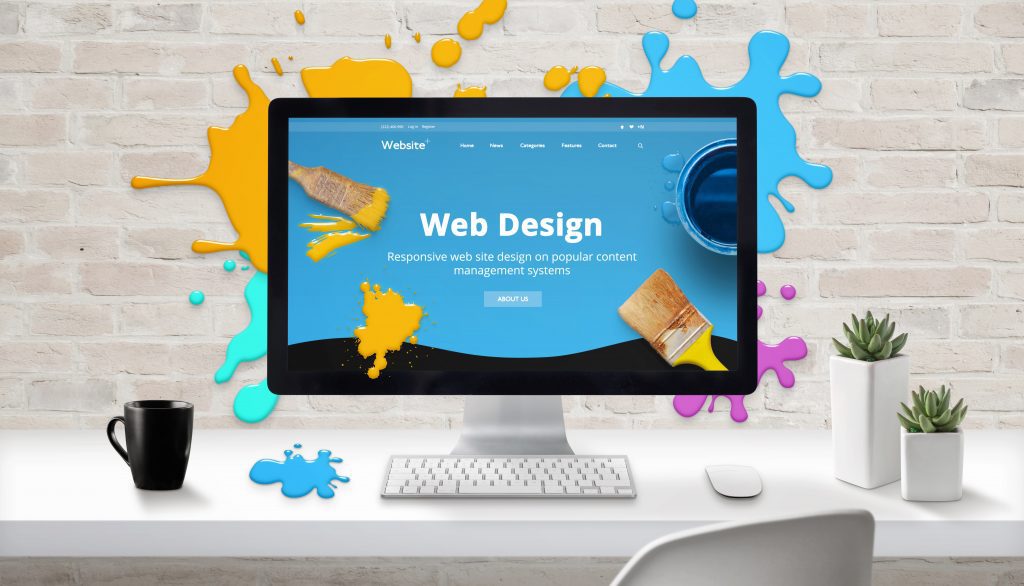Here at Coast, we see websites everyday as part of our normal routine. Each one has its own unique functionalities that attract us to them. But when making a website appealing and attractive, the design is just as important as the functionality.
A website’s design is a key factor to customer engagement – i.e., traffic. These days, there’s hardly a business out there that doesn’t have a website in some form or another. We live in a digital world, so when looking for a product or service, we all go to the internet. This means that their website can often be the first impression people have of any given brand, and no one wants to make a bad impression.
A well-designed website is an attractive website with useful functionalities, as well as the message the business wants to convey to their visitors. If a website has a great design, it will ensure a customer has a good experience moving through the website. For example, a professionally created logo design gives identity to a business, just as a website gives identity to any business brand. There are some basic fundamental rules that designers need to follow when designing a website, here are 5 of them.
#1. Be consistent throughout
Consistency is hugely important when designing a website.
Symmetry should flow throughout each page of the website. You must use the same font, colour, and design style throughout the website. The header, footer, body section should be well-designed and enticing to a customer.
#2. Consider the navigation
Another important point that designers need to keep in mind while designing a website is navigation. With a lot of information and pages on a website, it becomes even more important. Website navigation, or ‘the user journey’, is something that you should always pay special attention to. A customer needs to be able to find even the most basic information easily – such as a phone number or email address – or you risk them leaving the site because they find it too complicated.
Well-maintained navigation lets the user find the information they want from the website easily. A customer will spend more time on the site if it has properly designed navigation, meaning it lets you retain prospects and convert them to purchasing customers. Therefore, navigation is all about making your website easy to access and navigate.
#3. Utilise the ‘F’ Word!
The most commonly used pattern for a website design is something called the F-Pattern.
Studies found that whenever customers visit the website, they look for the F pattern. This means their eyes are naturally drawn to look from left to right and then from the top of the page downwards to the bottom – like the shape of the letter F. We read from left to right, so we tend to look more towards the left-hand side of the screen/page and less at the right-hand side.
It’s down to the designer to give the visitors the natural flow of reading rather than forcing them towards any specific section unnaturally. It gives them a better user experience and attracts more users towards the website. Therefore, many websites tend to use the ‘F’ shaped design as standard.
#4. Keep it simple!
Simplicity is best. Regardless of the type of website you are designing, simple design is considered to be the best option more often than not.
An overly complicated design is no guarantee of attractiveness, but a simple one can work wonders. If a website appears to be too ‘busy’ with lots of elements in the web page, then it can distract the users. A clean design makes it more appealing and lets the user locate the information easily.
#5. Make sure it’s mobile friendly
It’s safe to say most of us all have a mobile phone, so another very important factor that the designer needs to take care of while designing a website is responsiveness. How will the site look when viewed on a mobile or tablet?
Today, on average, 70% of website visitors are mobile users. The number of mobile users is increasing every day and is only going to continue to rise as mobile devices continue to dominate the digital landscape. Websites need to be responsive to be able to adjust to different devices and screen sizes. If a website isn’t responsive, then it can make the site difficult to navigate and potentially deter users and increase the bounce rate. Without any effort from the users, the layout must change and adapt appropriately.
Keeping these fundamentals in mind will make sure your website is mobile-friendly.
So, in summary….
The trends in the design industry keep on changing and always will. Technology and software are constantly evolving, and this is also applicable to website design. Designers need to keep on top of these trends to stay ahead of the game.
A website isn’t just for show, it’s there to generate interest, increase sales and grown your business. So, if we keep in mind the basic principles of website design, then we can be sure a well-designed website will be enticing, engaging and perform well.
If you’d like to find out how our talented web design and development specialists craft successful, user-friendly websites, get in touch today.
If you’re looking for more specific web design guidance, check out some of our other popular blogs on the subject:
